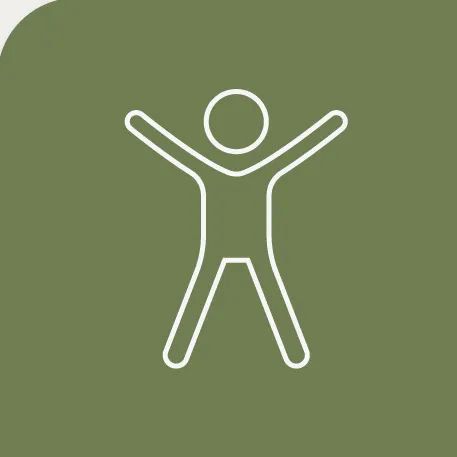What is fatphobia and what are its consequences?
Fatphobia is defined as an intense hatred or fear of people living in larger bodies. It’s extremely prevalent and insidious, apparent in a variety of settings, from healthcare, the work place, transportation, social gatherings,and dating.
Fatphobia has far-reaching consequences for fat people, a term that’s been reclaimed by those living in higher-weight bodies. It leads to weight stigma, weight-based discrimination, and fat-shaming, as well as a host of other negative effects, including: (1,2)
- Body dissatisfaction
- Depression
- Psychological stress
- Poor self-esteem
- Poor body image
- disordered eating
Fatphobia is responsible for negative stereotypes about fat people, as well as the view that they are unhealthy, and these attitudes and beliefs can be seen in the gay and queer men community, causing many men to feel excluded and ostracized.
Gay men, fatphobia, and toxic masculinity
Although many gay men want to believe in the inclusivity of their community, the sad fact is that gay men can be very exclusionary, toxic, and fatphobic. Gay men often deal with immense pressure to obtain the “ideal” masculine body—namely, a lean and muscular build, and that pressure is compounded by hookup apps like Grindr in which men list their thinly-veiled prejudices as “preferences,” such as “no fats” and “no femmes.”
While fatphobia in the gay men community is certainly caused by our society’s harmful attitudes related to body image and attractiveness, it may also be a product of toxic masculinity and misogyny. Many men equate fatness with femininity, thus “No Fats” and “No Femmes” often being linked on hookup apps.
This creates a culture of exclusion for queer men living in larger or higher-weight bodies who don’t feel welcome in their own community, creating further insecurity, body dissatisfaction, poor self-esteem, and feelings of rejection.
One study found that more than 33% of gay men, most of whom were not overweight according to BMI standards, reported experiencing fatphobia. (3) And the most common type of weight stigma experienced was rejection from potential romantic partners due to weight. (3)
A follow-up study on fatphobic attitudes from potential romantic partners found that when compared to straight, fat men approaching women, gay men in higher-weight bodies were more likely to be treated rudely, mocked, or blatantly ignored when approaching men deemed attractive by societal standards. (3) This study shows how many gay men experience negative consequences of fatphobia, because they may not meet the impossible standards gay men set for one another.
Eating disorders in gay men
Fatphobia in the gay community can have dangerous consequences, including increased rates of eating disorders among gay men. Research has shown that gay men are more likely to have eating disorders than their straight counterparts. One study found that 14% of gay men had a current or previous eating disorder, such as anorexia nerovsa (AN) or bulimia nervosa (BN), and an additional 50% reported significant risk factors for eating disorder development. (4)
Research also indicates that compared to straight men, gay men: (4)
- Report less control related to eating
- Engage in more binge eating episodes
- Engage in more frequent dieting
- Engage in more purging behaviors
- Exercise more often
This is true of gay adolescents and young adults as well, who are more likely to engage in compulsive exercise, caloric restriction, binging, purging, fasting, and diet pill use. It was also found that these gay teens were more likely to experience a decrease in weight from adolescence to young adulthood. (4)
Eating disorder risk factors for gay men community
Risk factors are biological, sociological, or psychological influences that increase the likelihood of developing a mental health condition like an eating disorder. Gay men have been shown to experience the following risk factors at higher rates than heterosexual men: (4)
- Drive for muscularity and thinness
- Body shape worries
- Weight concerns
- Eating concerns
- Poor body image
- Body image anxiety
- Internalization of “ideal” body type
- Susceptibility to advertising and marketing related to appearance
- Frequency of talking about appearance
One study found that 63% of gay men based their self-worth on their weight and appearance, while about 50% experienced dissatisfaction with their eating behaviors. (4)
Additionally, gay men report a higher disparity between their current body shape and the body shape they think they need to obtain in order to attract a partner. And this disparity can lead to anxiety about weight, shape, and eating behaviors, including disordered eating behaviors. This research suggests that beliefs related to partner preferences can contribute to disordered eating and subsequent eating disorders in gay men. (4)
Compared to their straight peers, gay adolescents and teens experience: (4)
- Increased desire for toned muscles
- Higher rates of body dissatisfaction
- Greater increase in shape and weight concern as they got older
- Increased desire to resemble men in the media
- Increased focus on being lean
Other factors, such as experiencing peer pressure, living in a higher-weight body, and perceived lower levels of masculinity, lead to increases in body dissatisfaction, which can then cause disordered eating behaviors. (4)
Risk factors related to sexuality and gender expression
Researchers have found several risk factors that are specific to a gay man’s sexual orientation and gender presentation, including:
- Ambivalence about queerness
- Preoccupation with how others view their sexual orientation
- Attending a gay-specific recreational group
- Viewing pornography (however, this does not mean pornography is bad or harmful; it simply exposes gay men to “ideal” men’s bodies)
- Experiencing sexual objectification
- Childhood bullying for gender nonconformity
- Conforming to masculine norms
- Internalizing athletic-appearance ideals
- Experiencing discrimination
- Hiding sexual orientation from others
- Internalized homophobia
- Internalized homonegativity
- Perceived stigma
- Identifying as a member of the gay community
- Social sensitivity
- Having an unmet need to belong to the community
- Viewing femininity in a negative light
- Gender role conflict
- Being a “femme”
Eating disorders are complex, multi-faceted mental illnesses caused by a multitude of environmental and genetic influences. As such, just because a person has a few of the above risk factors, it doesn’t mean they’ll necessarily develop an eating disorder. However, it does mean they may be vulnerable to disordered eating.
Combating fatphobia in the gay community
If you are a member of the gay community and want to actively work to combat fatphobia exhibited by fellow queer men, here are some things you can do:
- Educate yourself on fatphobia, both overt and covert examples, the various settings it occurs in, and its harmful effects
- Educate yourself about initiatives like Health At Every Size (HAES)
- Read about diet culture and how it influences fatphobia and weight stigma
- Follow social media accounts advocating and organizing for fat liberation
- Examine your own misogyny and the beliefs you’ve internalized about attraction and worth
- Challenge the fatphobic attitudes of others within and outside of your community
- Correct people when they refer to their prejudices as “preferences”
- Learn to appreciate and celebrate your own body, no matter the size, shape, or weight
- Avoid self-criticism and toxic body appearance talk
- Avoid using judgmental and shaming language related to food, such as “good” or “bad” foods
- Take a zero-tolerance stance on weight discrimination, fatphobia, and toxic behaviors
At the end of the day, there cannot be queer liberation without fat liberation, too. Unfortunately, many queer men do not feel welcome in the gay community due to fatphobia, weight stigma, and negative weight-based attitudes and views. For gay men who already experience discrimination from the world at large, exclusion from their own alleged community can feel extra painful. It is going to take a lot of unlearning and intentional work to make gay spaces safe and inclusive for people of all sizes.










